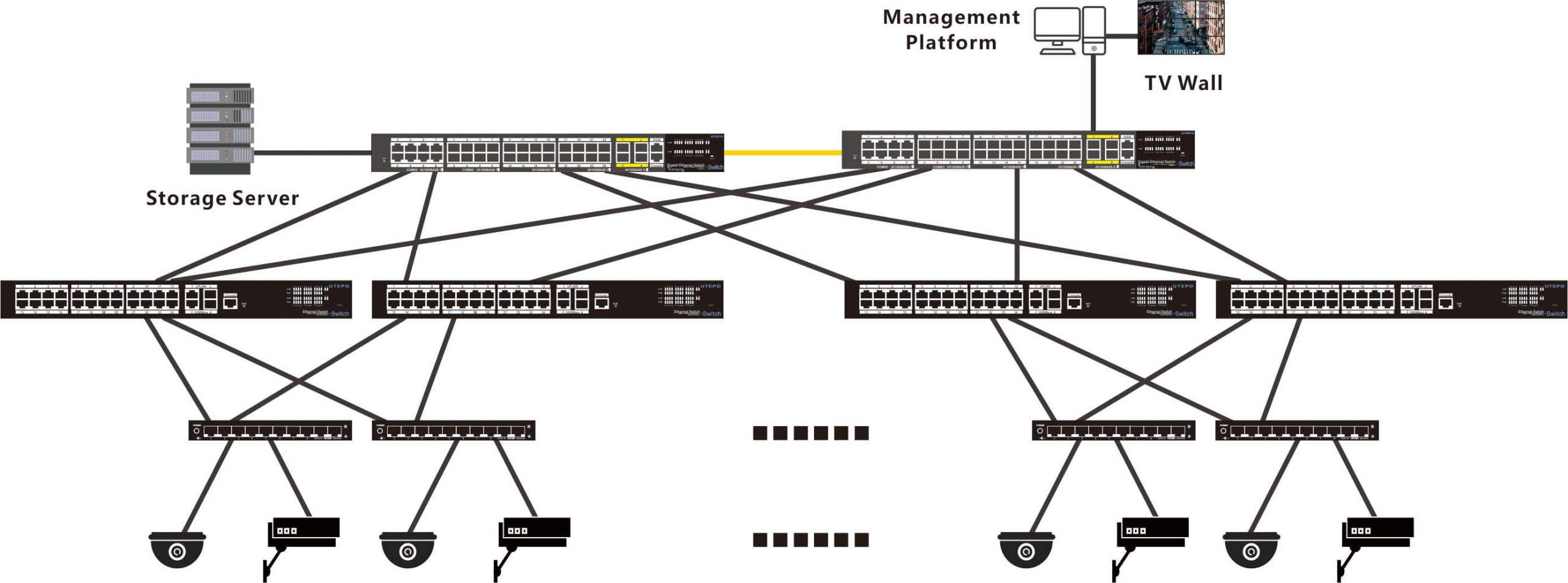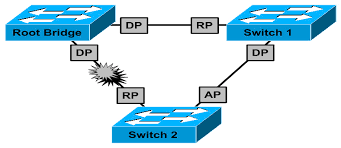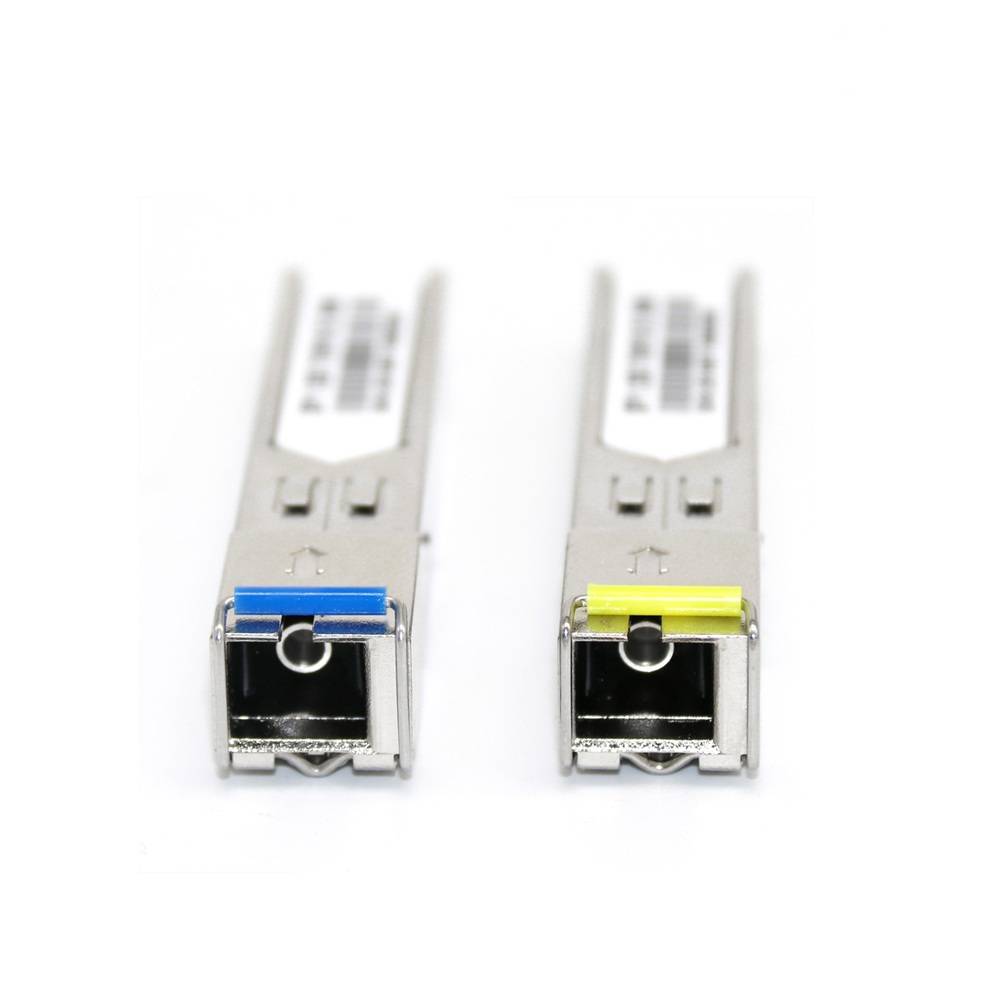How to calculate Backplane bandwidth and packet sending rate of a switch?
Calculation of backplane bandwidth and packet forwarding rate for switches in each layer.
When designing a large monitoring project, the main focus is on the selection of switches. Here we choose a layer three network architecture, the network structure for the aggregation layer, the access layer and the core layer. Compared to the layer two network architecture, the network scale of the layer three architecture is larger, the transmission distance is longer, and the scalability is higher.
If the switch allocation is not reasonable, some networks of any size will experience delays or drops from time to time, and even cause system paralysis. Therefore, the reasonable selection and allocation of switches in the access layer, aggregation layer and core layer is very important. And the key points of choosing a switch lie in the brand and parameters of the switch itself.
A switch at the access layer
To use the access layer switch, if the project itself is not too big and you don’t have future development vision, you can use some easy to use access switches. Most of the 100 Mbps switches are used in public projects where the number of connected terminals does not exceed 8. If the number of terminals is more than 8, Gigabit Uplink switch is recommended.
A switch in the aggregation layer
The high pressure accumulation carries the connection with the lamination and the core layer. Consider concurrent processing monitoring video viewing bandwidth.
Step 1: Calculate the bandwidth of the switches in the aggregation layer.
If there are 1000 IP cameras and 8 aggregation switches, each switch will handle a total of 500M data rate from 125 cameras (125*4M=500M). This aggregation switch application must support simultaneous transmission of more than 500M switching capacity. A public gigabit switch fulfills this requirement.
Step 2: Calculate the bandwidth of the backplane switches in the aggregation layer.
To ensure sufficient bandwidth, the backplane bandwidth requirement for a 16-port Gigabit switch is (16*1000M*2)/1000=32Gbps.
Step 3: Calculate the packet delivery rate.
The packet sending rate in a 1000M port is equal to 1.488Mpps/s. The cumulative packet transfer rate of a 16-port switch is 16*1.488Mpps/s=23.44Mpps.
According to the above conditions, if a 16-port Gigabit switch is selected for the aggregation layer, the aggregation layer must have a backplane bandwidth of at least 32Gbps and a packet transmission rate of at least 23.44Mpps.
Switches at the core or core layer
The blind switch plays the role of data transmission and setting the network structure.
The core switch is mainly responsible for data transmission and network architecture configuration, and has higher requirements for switching capacity, network management functions, and stability. In addition, since the storage device is located on the core layer, it must consider the switching capacity of the switch as well as the bandwidth and fast transmission capacity of the link to the core.
The following conditions must be met…
Bandwidth
The monitoring bandwidth of 1000 channels is at least 1000*4Mbps=4000Mbps. Core switch It is recommended to choose a switch with 10Gb or 10Gb bandwidth with a 10Gb uplink port so that the data flow is smooth.
Backplane bandwidth
If a total of 12 gigabit ports are used with two 10 gigabit ports, to ensure sufficient bandwidth, the required bandwidth of the core switch is (12*1000M*2+2*10000*2)/1000=64Gbps.
Package shipping rates
The packet sending rate on a 1000M port is 1.488Mpps/s, a 10G port is 14.88Mpps/s.
To ensure line speed transmission, there will be at least 12 Gigabit ports and two 10 Gigabit ports, then the transmission rate of the core switch is 12 * 1.488Mpps/s+2 * 14.88Mpps/s=47.56Mpps.
According to the above conditions: When 1000 cameras access the network, the core layer switches must have at least 64 Gbps of backplane bandwidth, the packet transmission rate of at least 47.56 Mbps.
In the actual project, if the 12 ports of the main switch are connected to the full load equipment, it is better to use 16 ports or 24 ports to ensure that the switch is not under full load and also its scalability. Gigabit interface port, two 10 Gigabit core switch ports connected to the top. Backplane bandwidth is required and the packet sending rate is higher. This switch capacity and packet forwarding rate are more than enough to ensure high-speed project information exchange.
In addition to the backplane bandwidth and packet transmission rate of the switch, its performance is still affected by various factors such as scalability, number of slots, module type, module redundancy, routing redundancy, etc. Especially on a switch scale. Network monitoring project, we need to calculate the backplane bandwidth and packet transmission rate when selecting the switch to ensure that the system works stably and reliably, keep the image from interruption and prevent the occurrence of failure. decreases.
Eriont, a manufacturer of access and blind layer switches in Iran











